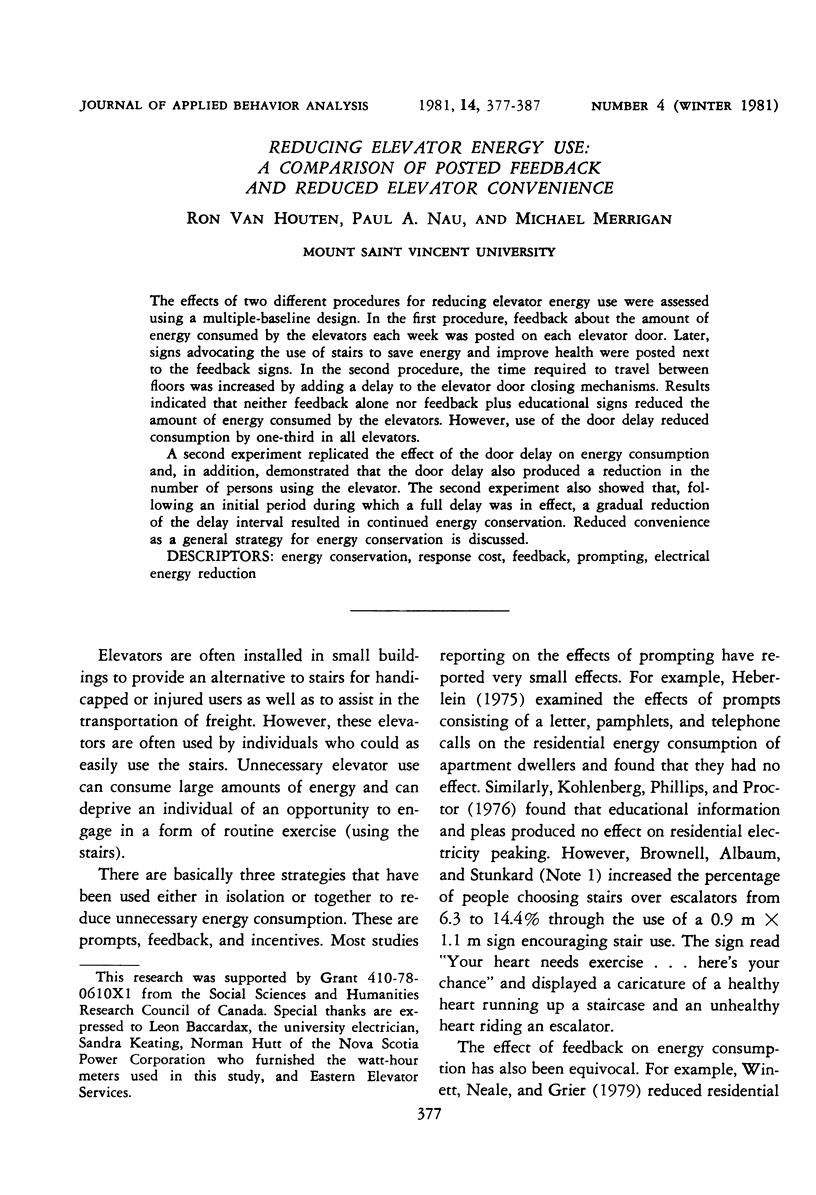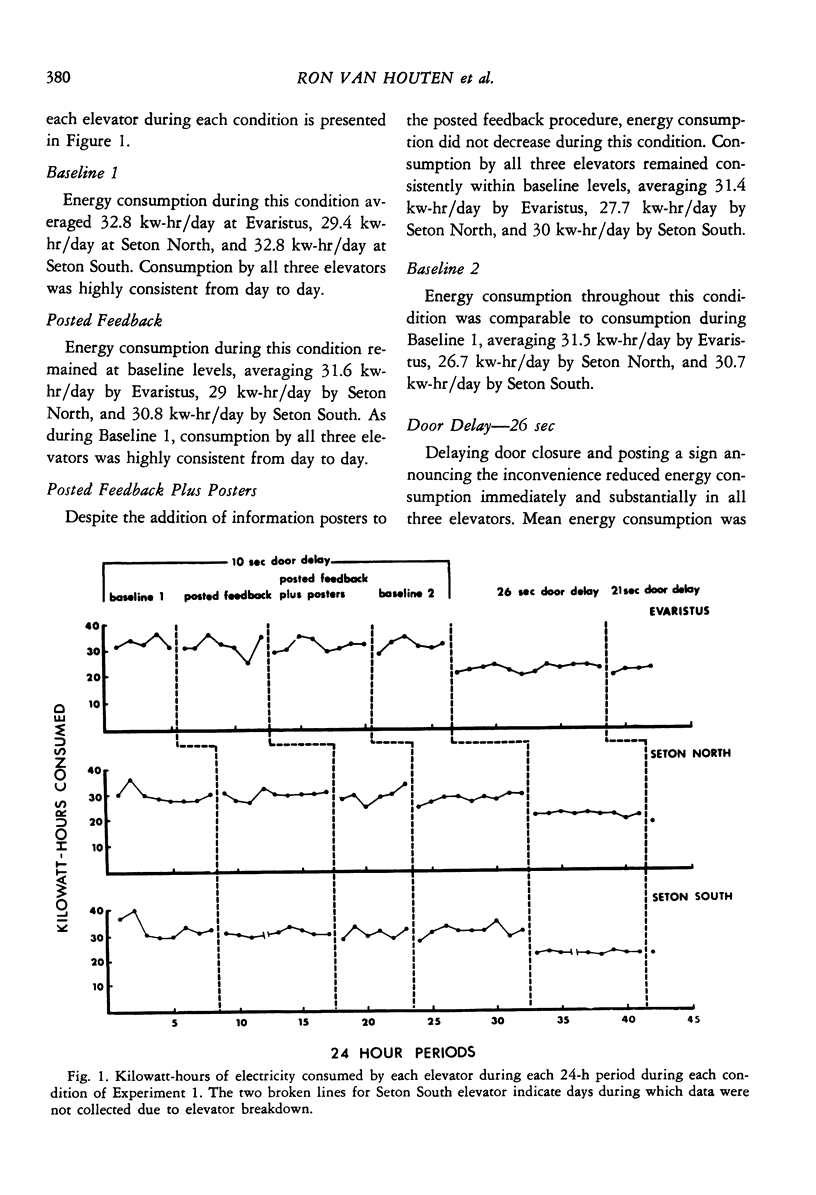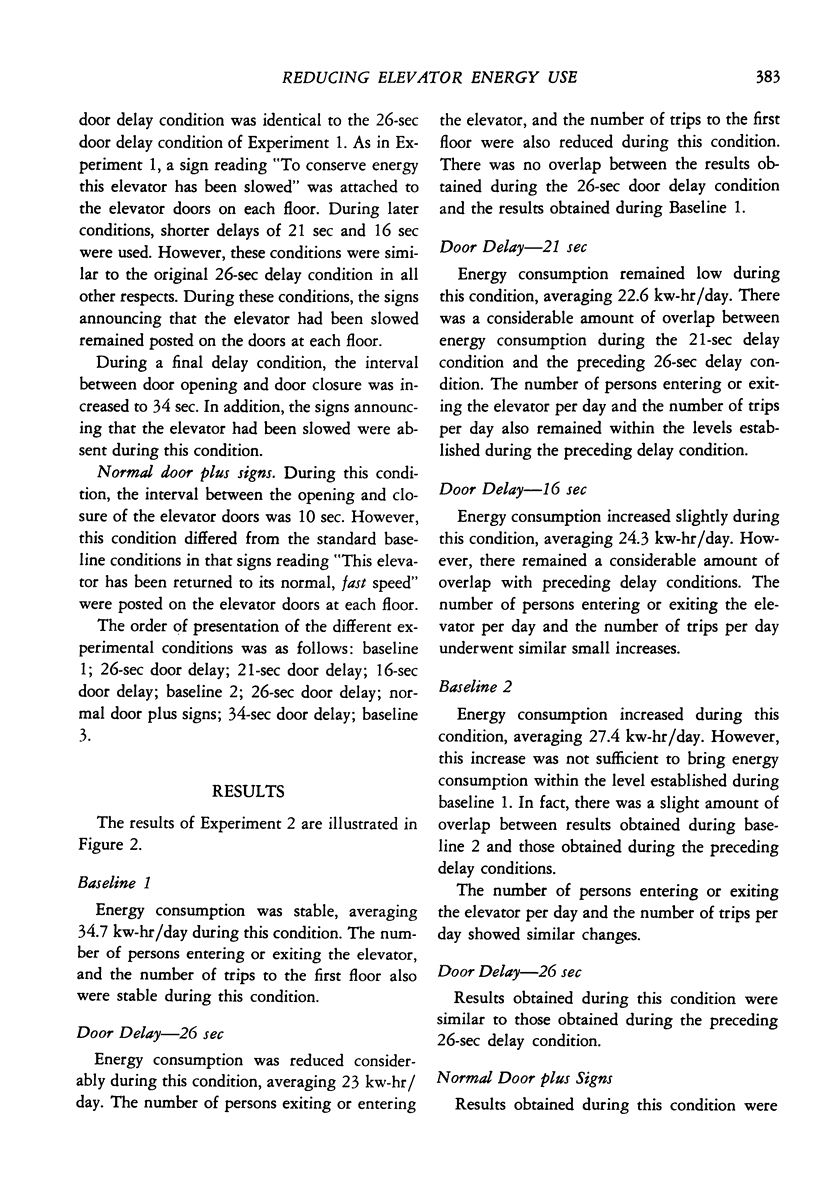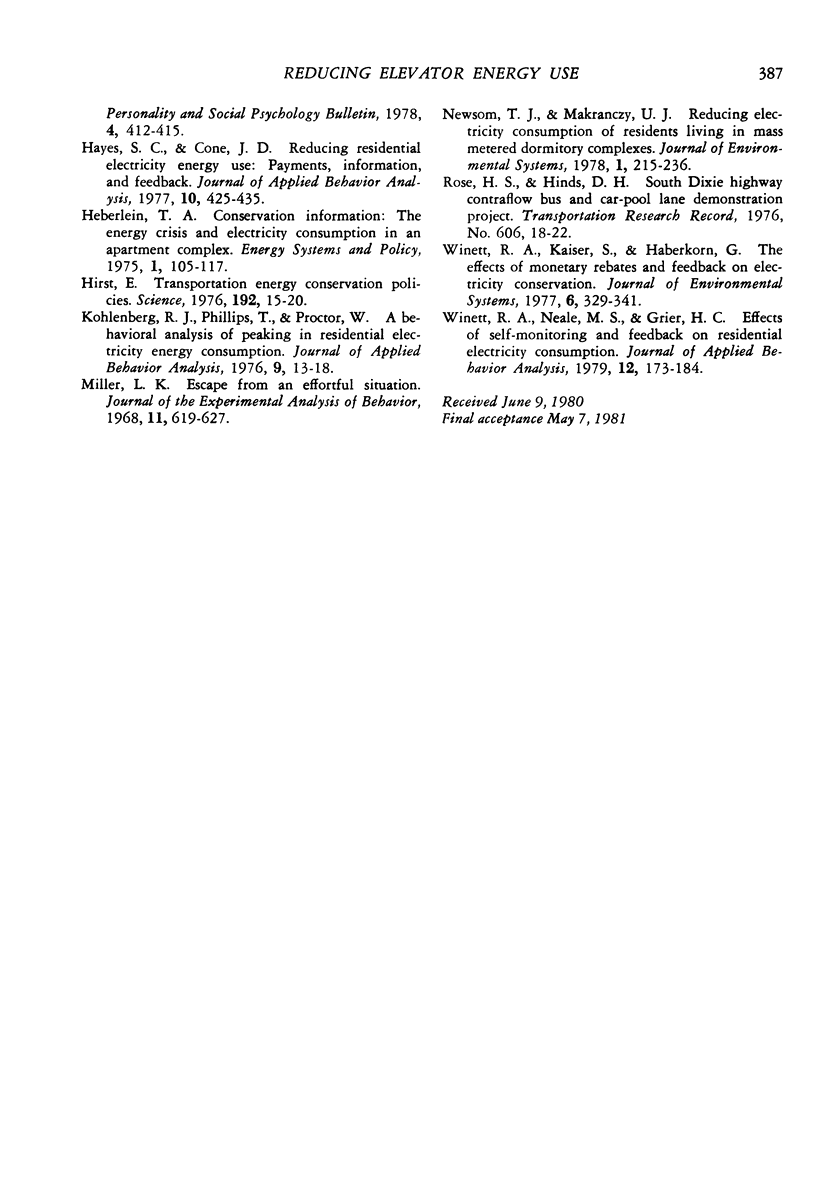Abstract
The effects of two different procedures for reducing elevator energy use were assessed using a multiple-baseline design. In the first procedure, feedback about the amount of energy consumed by the elevators each week was posted on each elevator door. Later, signs advocating the use of stairs to save energy and improve health were posted next to the feedback signs. In the second procedure, the time required to travel between floors was increased by adding a delay to the elevator door closing mechanisms. Results indicated that neither feedback alone nor feedback plus educational signs reduced the amount of energy consumed by the elevators. However, use of the door delay reduced consumption by one-third in all elevators.
A second experiment replicated the effect of the door delay on energy consumption and, in addition, demonstrated that the door delay also produced a reduction in the number of persons using the elevator. The second experiment also showed that, following an initial period during which a full delay was in effect, a gradual reduction of the delay interval resulted in continued energy conservation. Reduced convenience as a general strategy for energy conservation is discussed.
Keywords: energy conservation, response cost, feedback, prompting, electrical energy reduction
Full text
PDF










Selected References
These references are in PubMed. This may not be the complete list of references from this article.
- Hayes S. C., Cone J. D. Reducing residential electrical energy use: payments, information, and feedback. J Appl Behav Anal. 1977 Fall;10(3):425–435. doi: 10.1901/jaba.1977.10-425. [DOI] [PMC free article] [PubMed] [Google Scholar]
- Hirst E. Transportation energy conservation policies. Science. 1976 Apr 2;192(4234):15–20. doi: 10.1126/science.192.4234.15. [DOI] [PubMed] [Google Scholar]
- Kohlenberg R., Phillips T., Proctor W. A behavioral analysis of peaking in residential electrical-energy consumers. J Appl Behav Anal. 1976 Spring;9(1):13–18. doi: 10.1901/jaba.1976.9-13. [DOI] [PMC free article] [PubMed] [Google Scholar]
- Miller L. K. Escape from an effortful situation. J Exp Anal Behav. 1968 Sep;11(5):619–627. doi: 10.1901/jeab.1968.11-619. [DOI] [PMC free article] [PubMed] [Google Scholar]
- Winett R. A., Neale M. S., Grier H. C. Effects of self-monitoring and feedback on residential electricity consumption. J Appl Behav Anal. 1979 Summer;12(2):173–184. doi: 10.1901/jaba.1979.12-173. [DOI] [PMC free article] [PubMed] [Google Scholar]


